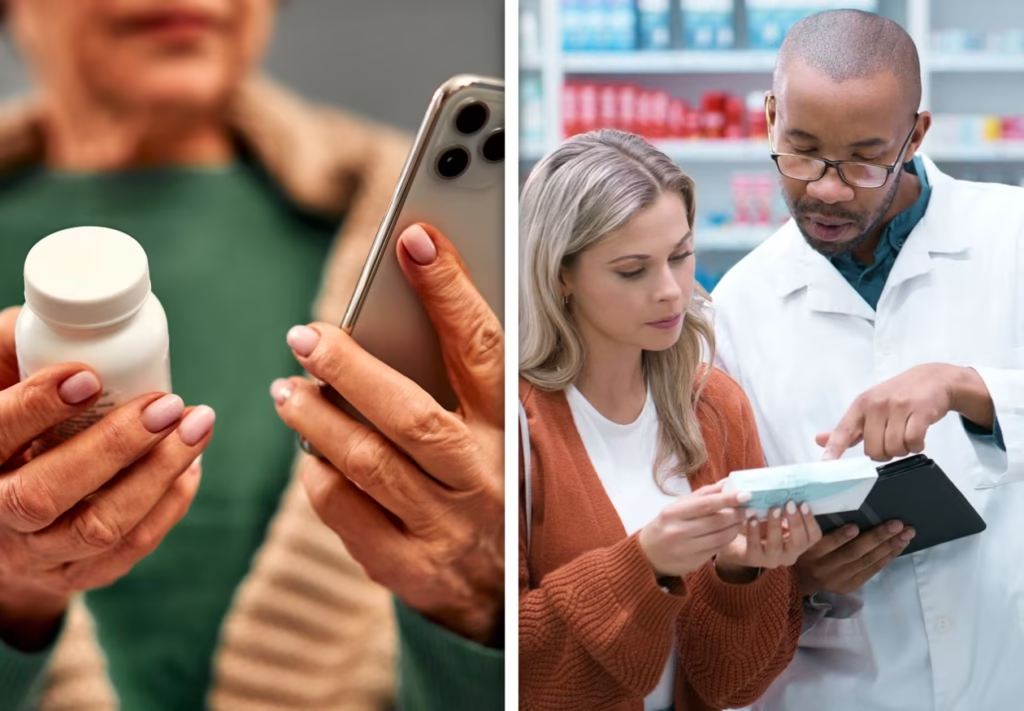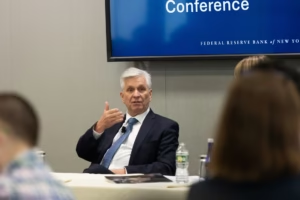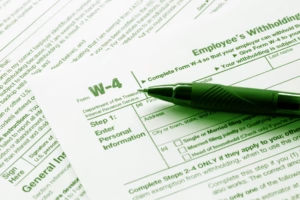When choosing between an online pharmacy service and a physical pharmacist, patients must consider both cost and convenience.
For almost twenty years, Emmabella Rudd used the same brand of life-sustaining insulin, which cost about $100 each ninety-day supply. However, she was horrified to learn from her pharmacy that her next prescription was not covered by her insurance and would cost an eye-popping $3,000 once she changed health insurance carriers in 2023.
Rudd, now 24, has Type 1 diabetes and was running low on insulin at the time. She had to decide whether to switch to a less expensive insurer-approved brand or find a way to pay for the medication her body was accustomed to. Rudd tested the new medicine brand, taking a chance.
Since receiving a diabetes diagnosis early in life, Rudd has been an advocate for insulin accessibility and diabetes research. “I didn’t have issues with it, but that’s not the case for everyone,” she added. “When your insurance changes and they’re forcing you to make that change, your life sometimes depends on it.”
As many Americans navigate a healthcare system where their insurance plans frequently dictate their access to prescription prescriptions, Rudd’s experience at the pharmacy counter serves as an illustration of the financial shocks and logistical problems they encounter.
Rising healthcare prices are a top concern for customers looking for the best policies as open enrollment for Medicare begins this Wednesday, for Affordable Care Act plans on November 1, and for individuals with employer-sponsored coverage throughout the fall.
Patients are forced to make a difficult trade-off between cost, convenience, and the reliable care of a local pharmacist because their insurance coverage frequently dictate which drugstore chains or mail-order services they can use to obtain their medication at a reasonable price.
Over the past ten years, digital pharmacies like Capsule and Amazon Pharmacy (AMZN) have made their impact on the market in addition to neighborhood pharmacies and chains like CVS (CVS) and Walgreens. At One Medical offices in the Los Angeles region, Amazon will soon start providing in-office pharmacy kiosks so that patients may pick up their prescriptions right after their doctor’s appointment.
Here are some factors that experts advise you should take into account when choosing between filling your medications at a typical brick-and-mortar pharmacy and using a delivery service.
Is it better to purchase your medication online, from a chain pharmacy, or from an independent pharmacist?
According to experts, choosing the ideal drugstore for you ultimately depends on your personal priorities. Spend some time considering your top priorities, whether they be price, ease of use, or service quality.
— Do you have no time in your day to stand in line at a pharmacy because you are so busy? Think about a mail-order business.
Are you concerned that if you reside in a warmer climate, your chilled insulin might not make it through the mail? Getting it from a pharmacist in person could give you some peace of mind.
Does your insurance cover the greatest medication prices at CVS or Walgreens? Perhaps the best course of action is to continue working with a chain pharmacy.
— Do you desire flexibility on cash pricing and require individualized guidance on how to provide medication to yourself or a loved one? Examine the independently run pharmacies in your neighborhood.
Since millions of Americans are anticipated to pay more for health insurance in 2026, the stakes surrounding locating the lowest drug prices have increased.
Asking for the cash price and comparing it to the insurance pricing—which may be lower in some circumstances—is always a smart idea, regardless of where you ultimately get your prescription filled. Additionally, discuss your alternatives with your primary care physician if you’re still not sure.
“The relationship with their family physician is probably the most important thing for patients, because they can help them, especially with their prescriptions and with medication adherence, and to keep their health as optimal as they can,” said Mike Sevilla, a family physician in Salem, Ohio.
“The same drug could be purchased for $10 or $220.”
According to Geoffrey Joyce, director of health policy at the University of Southern California’s Schaeffer Center for Health Policy and Economics, many insured consumers aren’t impacted by changes in drug prices because they usually only use one pharmacy and pay a copay, which is the set amount a policyholder must pay for covered prescription drugs.
PBMs, or pharmacy-benefit managers, serve as a go-between for insurers and pharmaceutical companies. They frequently have vertical integrations with major insurance companies. According to the Federal Trade Commission, in 2023, the top three PBMs—CVS Caremark, owned by CVS; Express Scripts, owned by Cigna (CI); and Optum Rx, owned by UnitedHealth (UNH)—controlled 80% of prescriptions written by pharmacies in the United States.
For this reason, a large number of Aetna customers utilize CVS for their medicines, Cigna policyholders use the mail-order pharmacy of Express Scripts, and UnitedHealthcare subscribers use Optum Rx Home Delivery.
From the archives (January 2025): The FTC attacks medicine distributors once more, claiming that some prices have increased by more than 1,000%.
However, Joyce stated that uninsured customers need to be more astute “because the price they face can vary dramatically from pharmacy to pharmacy.”
“You could pay $10 [or] you could pay $220 for the same drug, depending on the pharmacy you went to,” stated the man. “They’re in a snake pit, and they’ve got to be very careful.”
Although online pharmacy services are convenient, bear this in mind.
Online pharmacies that bring your medication to your door offer the ease of not having to wait in line in person and are occasionally the least expensive in-network alternative with your insurance.
The online service Capsule accepts the majority of insurance policies, including Medicare and Medicaid, and only requires a copay, which varies based on your plan. The online pharmacy claims to handle refills and provide free same-day delivery for medicines.
Eric Kinariwala, the founder and CEO of Capsule, told MarketWatch in an email that the company allows users to contact pharmacists “in a way that’s private, secure and on their own terms,” using voice calls, in-app chat, or text messages. “What we’ve found is that people actually prefer engaging with the pharmacist digitally.”
Cost Plus Drugs, owned by billionaire Mark Cuban, offers generic drugs to those without insurance by eliminating the intermediary and providing pricing transparency by disclosing the amount the company paid for the drug from the manufacturer plus a 15% markup, pharmacy labor, and shipping expenses.
From the January 2021 archives: “A vicious cycle of price increases has been created by manufacturers and middlemen”: Mark Cuban promises to charge $20 for this $225 drug.
“You go on their website and you see, ‘Oh my God, my cholesterol-lowering medicine only costs 60 cents,'” said Joyce. ? “The price of the drug is a major factor in getting it to the patient for nine out of ten generic medications. The generics are quite inexpensive, so it’s not [the expense of] making them.”
BourseWatch reached out to Cost Plus Drugs for comment, but they did not reply.
According to experts, choosing pharmacy delivery means giving up the face-to-face interaction you can have with a pharmacist if you have issues about your prescription. Additionally, if the item is exposed to severe weather, mail delivery could jeopardize safety and effectiveness, according to Douglas Hoey, CEO of the National Community Pharmacists Association.
Hoey, a certified pharmacist in Oklahoma, Virginia, and Texas, stated that new technologies such as mail-order services and kiosks attempt “to put medicine on an assembly line, and patients don’t fit on assembly lines.”
The pharmaceutical services offered by Amazon “make medications more accessible and affordable.”
According to a statement sent to MarketWatch via email, “Every prescription filled through Amazon Pharmacy – whether through home delivery or a kiosk – is reviewed by a licensed pharmacist, just as it would be at a traditional pharmacy, and patients can consult with a pharmacist.” “Amazon Pharmacy Kiosks is an optional service that can simplify getting treatment faster – helping patients leave their doctor’s office informed and with medication in hand, not a to-do list.”
Medication adherence, or the degree to which a patient takes a prescription medication as directed by their doctor, taking into account dosage, frequency, and timing, is another issue.
When patients visit a local pharmacy in person, Sevilla reported that he has observed “better adherence in taking [medication] more regularly than they do for a mail-away pharmacy.”
According to Kinariwala, the software provided by Capsule and the convenience of interacting with a pharmacist via the website and app have been crucial in putting medication adherence first.
“We partner with insurance plans and physicians specifically to drive adherence, and we have substantially better adherence rates than the overall industry because we’ve built specific software our team uses to make sure people don’t run out of their medications,” he stated.
Independent pharmacy versus chain pharmacies
You’re not alone if you prefer to pick up a prescription from a pharmacist in person.





